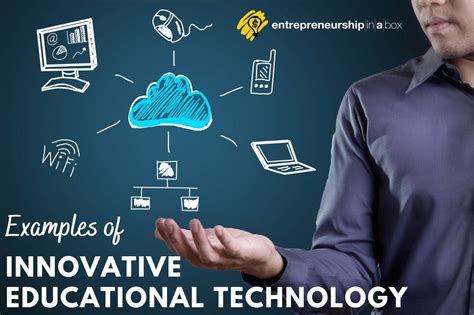In this digital age, the education landscape is undergoing a transformation, thanks to the integration of innovative technologies in classrooms and virtual learning environments. From interactive whiteboards to virtual reality and artificial intelligence, these breakthroughs are revolutionizing the way students engage with educational content and paving the way for personalized and accessible learning experiences.
In this blog post, we will explore the impact of various innovative technologies on education, from interactive whiteboards enhancing classroom engagement to adaptive learning systems customizing education to individual needs. We will delve into how virtual reality is opening new dimensions of learning and how gamification is turning education into a fun and engaging experience. Additionally, we will discuss the role of online learning platforms in providing accessible education for all and the empowering nature of the flipped classroom model for self-directed learning.
Join us as we examine the potential of these technologies to inspire learning and unlock insights for student success. Whether it’s through collaborative tools fostering peer-to-peer learning or mobile apps enabling learning-on-the-go, the possibilities for educational innovation are endless.
Table of Contents
Interactive Whiteboards: Enhancing Classroom Engagement
Interactive whiteboards have revolutionized the way teachers deliver lessons and engage with students in the classroom. With the interactive features and capabilities of these digital tools, educators are able to capture the attention of their students and create a more engaging learning environment.
By utilizing interactive whiteboards, teachers can incorporate multimedia elements such as videos, animations, and interactive lessons that cater to different learning styles. This allows for a more dynamic and engaging learning experience compared to traditional methods of instruction.
Furthermore, interactive whiteboards enable collaboration among students, as they can actively participate in interactive activities and contribute to discussions through the use of the whiteboard. This interactive and collaborative approach fosters student engagement and participation in the classroom.
Overall, the use of interactive whiteboards has proven to be an effective way to enhance classroom engagement by incorporating interactive and multimedia elements that cater to diverse learning styles and promote collaboration among students.
Virtual Reality: Opening New Dimensions of Learning
Virtual reality (VR) has revolutionized the field of education by providing immersive and interactive experiences for learners. With VR technology, students are able to explore new environments, manipulate objects, and interact with virtual elements in a way that traditional learning methods cannot replicate.
By using virtual reality in education, instructors can transport students to places that are otherwise inaccessible, such as outer space, historical sites, or the microscopic world. This hands-on approach to learning enhances student engagement, retention, and comprehension of complex concepts.
Moreover, VR allows for personalized learning experiences, where students can progress at their own pace and receive immediate feedback. This individualized approach promotes autonomy and self-directed learning, empowering students to take ownership of their education.
In conclusion, virtual reality technology is opening new dimensions of learning by providing immersive, interactive, and personalized experiences that enhance student engagement and understanding. As the VR technology continues to advance, its potential to transform education is limitless.
Artificial Intelligence in Education: Personalized Learning Paths
Artificial Intelligence (AI) has revolutionized the education sector by introducing personalized learning paths for students. With AI, educational technology is able to analyze the learning behavior of individual students and provide customized learning experiences that cater to their specific needs and abilities.
By leveraging AI algorithms, educators can create personalized learning paths that adapt to each student’s pace of learning, strengths, and weaknesses. This level of customization ensures that students receive the support and resources they need to succeed, ultimately improving their academic performance and confidence in their abilities.
Furthermore, AI-powered personalized learning paths enable students to explore and engage with educational content that aligns with their interests and learning styles. This not only enhances their motivation to learn but also fosters a deeper understanding of the material, as it is presented in a way that resonates with them personally.
Overall, the integration of AI in education has ushered in a new era of personalized learning, where students are empowered to take control of their educational journey and achieve success through tailored support and resources.
Online Learning Platforms: Accessible Education for All
Online learning platforms have revolutionized the way people access education. With the advent of the internet, it is now possible for individuals from all walks of life to pursue their academic interests, regardless of geographical location or time constraints. The accessibility provided by these platforms has opened up a world of opportunities, making education available for all.
Through online learning platforms, individuals can access a wide range of courses, from academic subjects to vocational skills, without the need to physically attend a traditional brick-and-mortar institution. This not only provides convenience but also allows for a more personalized and flexible learning experience.
Moreover, these platforms often offer a variety of resources such as video lectures, interactive quizzes, and discussion forums, which cater to different learning styles and preferences. This multifaceted approach to education ensures that individuals can engage with the material in a way that best suits them, enhancing their overall learning experience.
Overall, online learning platforms have made education more accessible and inclusive, breaking down barriers to learning and enabling individuals from diverse backgrounds to pursue their educational goals. As technology continues to advance, the potential for these platforms to further enhance accessibility and cater to the needs of all learners is undoubtedly promising.
Gamification: Transforming Education into Fun and Engaging Experience
Gamification in education is the practice of using game design elements and principles in learning environments to make the process more engaging and interactive. By incorporating gamification into the classroom, educators can create a fun and motivating learning experience for students, leading to increased participation and improved knowledge retention.
One of the key benefits of gamification in education is that it helps to foster a sense of learning through play. Students are more likely to be actively involved in the learning process when it feels like a game rather than a chore. This approach can also help students develop important skills such as problem-solving, critical thinking, and collaboration, all of which are essential in today’s fast-paced and complex world.
Furthermore, gamification can personalize the learning experience for each student. By incorporating elements such as rewards, challenges, and feedback, educators can tailor the learning journey to meet the needs and abilities of individual students. This approach can help to keep students motivated and engaged, ultimately leading to better learning outcomes.
Overall, gamification has the potential to transform education into a more fun and engaging experience. By integrating game-like elements into the learning process, educators can create an environment that is not only enjoyable but also conducive to meaningful learning and skill development.
Flipped Classroom Model: Empowering Self-Directed Learning
The flipped classroom model is revolutionizing the way students learn and educators teach. In this innovative approach, traditional teaching methods are turned upside down, with students taking control of their own learning outside of the classroom, and then using class time for more interactive and engaging activities. This model empowers self-directed learning by allowing students to access lectures, videos, and other materials at their own pace, while also providing opportunities for individualized instruction and support.
One of the key benefits of the flipped classroom model is that it encourages students to take responsibility for their own learning. By having access to educational resources outside of the classroom, students can learn in a way that best suits their individual learning styles and preferences. This not only leads to a deeper understanding of the material, but also fosters a sense of independence and self-motivation.
Furthermore, the flipped classroom model allows for more personalized interactions between students and teachers. With the traditional lecture format moved outside of class time, teachers can devote more attention to addressing individual student needs, providing targeted support, and engaging in meaningful discussions and activities with their students. This personalized approach to learning not only enhances student engagement and comprehension, but also fosters a sense of community and collaboration within the classroom.
In conclusion, the flipped classroom model is a powerful tool for empowering self-directed learning. By leveraging technology and redefining the traditional classroom structure, this model offers a more personalized and interactive learning experience for students, while also encouraging greater independence, responsibility, and engagement in their own education.
Mobile Apps for Education: Learning-on-the-Go
With the advancement of technology, mobile apps have become an integral part of our daily lives. In the field of education, mobile apps are revolutionizing the way students learn, allowing them to access educational materials anytime, anywhere.
Whether it’s language learning, math practice, or science experiments, mobile apps offer a wide range of interactive and engaging learning experiences. Students can now carry their virtual classrooms in their pockets, enabling them to continue their education beyond the confines of traditional classrooms.
Mobile apps for education also provide a personalized learning experience, allowing students to learn at their own pace and receiving instant feedback. This flexibility empowers students to take ownership of their learning journey and encourages self-directed learning.
Furthermore, mobile apps can cater to different learning styles, making education more inclusive and accessible for diverse learners. They offer a platform for individualized learning, enabling students to explore subjects that interest them and delve deeper into specific topics.
Adaptive Learning Systems: Customizing Education to Individual Needs
Adaptive Learning Systems are revolutionizing the way education is delivered to students, as they have the capability to customize learning to individual needs. These systems utilize data analytics to understand the strengths and weaknesses of each student, allowing for personalized learning paths that cater to their unique learning styles and pace of learning.
By adapting the content and pace of instruction to meet the needs of each student, these systems ensure that no student is left behind. Whether a student needs more time to master a concept or is ready to move on to more advanced material, adaptive learning systems provide the flexibility to accommodate these needs.
Furthermore, these systems empower educators by providing valuable insights into each student’s progress, allowing them to provide targeted support and intervention where necessary. This individualized approach to education not only enhances student learning outcomes but also fosters a greater sense of engagement and motivation, as students feel supported and challenged at their own level.
Ultimately, adaptive learning systems are paving the way for a more inclusive and effective education system, where every student has the opportunity to learn and succeed in a way that is tailored to their individual needs.
Data Analytics in Education: Unlocking Insights for Student Success
In today’s digital age, education has become increasingly data-driven. With the emergence of data analytics in education, educators are now able to unlock valuable insights that can lead to student success. By harnessing the power of data, schools and educational institutions are able to gain a deeper understanding of student performance, behavior, and learning patterns. This information can then be used to make informed decisions to improve teaching methods and student outcomes.
One of the key benefits of data analytics in education is its ability to personalize the learning experience for each student. By analyzing student data, educators can identify areas where individual students may need additional support or enrichment. This personalized approach to learning can help students reach their full potential and achieve academic success. Additionally, data analytics can also be used to track student progress over time, allowing educators to intervene early if a student is falling behind.
Furthermore, data analytics can provide insights into the effectiveness of various teaching strategies and curriculum. By analyzing data on student performance, educators can identify which methods are most successful in engaging students and promoting learning. This information can then be used to refine and improve teaching practices, ultimately leading to better student outcomes.
Overall, the integration of data analytics in education has the potential to revolutionize the way we approach teaching and learning. By unlocking valuable insights and personalized learning paths, educators can work towards ensuring the success of every student, regardless of their background or learning style.
Collaborative Tools: Fostering Peer-to-Peer Learning
Collaborative tools in education are revolutionizing the way students learn by fostering peer-to-peer learning. These tools provide students with the opportunity to work together, exchange ideas, and help each other grasp complex concepts. By using collaborative tools such as Google Docs, G Suite, and Slack, students can engage in group projects, share resources, and communicate in real-time, breaking down the barriers of traditional classroom learning.
Furthermore, collaborative tools promote a sense of community and teamwork among students, allowing them to leverage each other’s strengths and learn from each other. This approach not only enhances learning outcomes but also prepares students for the collaborative nature of the modern workplace. Through collaborative tools, students develop essential communication, leadership, and critical thinking skills that are highly valued in today’s society.
Moreover, the use of collaborative tools in education goes beyond the classroom, as it also connects students globally, enabling them to interact with peers from different cultures and backgrounds. This not only broadens their perspectives but also fosters empathy and understanding, shaping them into global citizens. The inclusive nature of collaborative tools ensures that every student has a voice and can contribute to the collective learning experience, promoting diversity and inclusion in education.
In conclusion, collaborative tools play a pivotal role in fostering peer-to-peer learning, driving student engagement, and preparing them for the demands of the 21st-century workforce. By leveraging these tools, educators can create an interactive and inclusive learning environment that empowers students to collaborate, communicate, and learn from each other, ultimately shaping them into well-rounded individuals equipped for success in the digital age.





